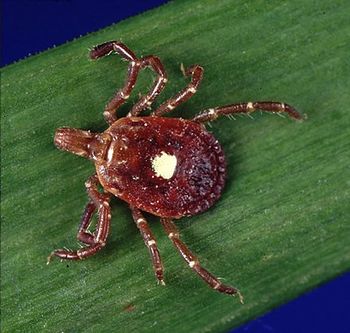
Did Infections Caused by World War I Contribute to Causing World War II?
How many of those who recovered from WWI-associated infections had residual neurological impairments that increased their risk for violence?
This year, 2018, will be the 100-year anniversary of the end of World War I (WWI), which occurred at 11 AM on November 11, 1918. Wars or any other form of violence never stem from a single cause; there are many contributing factors. Unfortunately, deaths from violence do not necessarily end when wars end; in fact, "more Americans have died from guns in the United States since 1968 than on battlefields of all the wars in American history."1 The scientific capability to understand and prevent violence lags behind the technical capability of weapon development. If this trend continues, how many violent individuals, groups, or countries will have access to highly sophisticated weapons of mass destruction? By looking at past events throughout history, individuals can better understand the factors that contributed to violent actions and events, and then they can use that knowledge to reduce those factors, and thus, prevent future catastrophes.
There are many motivators that can lead to wars; common motivators include economic or territorial gain, religious conflicts, nationalism, racism, revenge, civil or revolutionary reasons, or for defensive purposes.2 Certain brain impairments increase the risk of violence; for example, injury to the right ventromedial prefrontal cortex impairs empathy, and injury to the orbital frontal cortex and other areas reduces impulse control.3 If either or both sides of a conflict are excessively influenced by individuals with brain impairments associated with violence, this may increase the risk of violence and war. However, when both sides of a conflict are influenced by individuals who are high-functioning with intact mental capabilities, the futility of war can more easily be seen, and thus, more readily avoided; a good example of this was the peaceful resolution of the Cuban missile crisis.
Warfare environments encourage the proliferation of infectious diseases. The movement of soldiers into regions where they lack immunity to local pathogens, crowding, malnutrition, stress, and deprivation during a war are all conducive to serious infectious and emerging diseases in soldiers, prisoners, refugees, as well as the general population. In fact, often, epidemics persist and expand even after a war ends. Examples of this include: the plague of Athens that occurred during the Peloponnesian War in 429 BC, bubonic plague that spread from the Venetians escaping Kaffa in 1347, the first appearance of syphilis in 1494/1495 that sprung up either from French troops returning from Naples or Columbus returning from the New World, typhus which followed Napoleon's retreat from Moscow in 1812, typhus and malaria which spread during the Korean War, cerebral malaria among Vietnam veterans, and Mycoplasma infections which sprung up in Gulf War veterans and their family members.4
During WWI, many infections, including vector-borne diseases, were identified as causing mortality, morbidity, and residual impairments.
WWI-related infections such as trench foot, trench fever (caused by louse-borne Rickettsia quintana, subsequently called Bartonella quintana), a range of helminths, intestinal parasites (including Ascaris, Trichuris, Capillaria and Taenia spp.), typhus, cholera, tuberculosis, typhoid fever, dysentery, scarlet fever, diphtheria, measles, whooping cough, and smallpox were not uncommon.5 Rape, prostitution, and sexual indiscretion that often occur during wars encourage the proliferation of venereal diseases. As the war spread beyond Europe, many soldiers were infected with malaria and other exotic diseases. Although Lyme and other tick-borne diseases were not recognized at the time, they probably added to the list of WWI infectious diseases as well. Nearly 5 million had encephalitis lethargica during that time, a third of whom died; most of the survivors had significant neurological impairments. In Germany, 800,000 died from tuberculosis between 1914 and 1920. Typhus—the greatest killer of mankind—reemerged in 1917, killed 3 million individuals (mainly in refugee camps), and was epidemic throughout the 1920s. Countless others became infected and died in prisoner-of-war and refugee camps during and following WWI.6 7 Towards the end of WWI, the Spanish Influenza epidemic expanded and went on to infect 500 million—one-fifth of the world’s population—and kill 50 million (a death toll higher than that caused by the Black Death in the Middle Ages). Furthermore, the Spanish influenza epidemic killed almost three times more individuals than the
This raises an important question: How many of the 450 million who recovered from Spanish flu or other WWI-associated infections had residual neurological impairments that increased their risk for violence?
Congenital infections during and following the war had the potential to adversely impact the developing nervous system and added to the number of those with residual impairments from these infections. Some of the infections seen in WWI are recognized to cause aggressiveness in a certain percentage of those infected. In fact, there is speculation that both Joseph Stalin and Adolf Hitler had syphilis.8, 9, 10, 11 Debate still exists regarding whether Hitler had been impaired by Spanish flu, syphilis, encephalitis lethargica, Lyme disease, and/or poison gas exposure.12 The well-documented presence of Parkinsonism symptoms in Hitler is suggestive he may have experienced post-encephalitic Parkinsonism from Spanish flu or encephalitis lethargica exposure.13 Therefore, it is quite possible that infectious disease-related impairments, fostered by WWI, may have impacted the behavior and judgment of Hitler, as well as many others on both sides of the conflict, and may have been a contributing factor in intensifying the conflicts of WWII.
To those working with individuals with mental symptoms associated with chronic and prior infections, it is clear there are some who show irritability, intolerance, poor impulse control, paranoia, predatory aggression, and other risk factors associated with aggressiveness after they become infected.14 Although we cannot absolutely prove nor disprove that WWI infections contributed to causing WWII, if close to one-fifth of the world’s population had infections with possible neurological sequelae it raises the likelihood of such an association.
Violence is not equally distributed throughout the world; there are parts of the world where the prevalence of violence varies and regions where violence was notably prevalent at certain periods in history. A very comprehensive study of many prehistoric cultures by Roser demonstrated many were very violent with an estimated 10% homicide rate, however, violence has decreased as civilizations advanced with improved health, literacy, education, and democratic governments.15 16 Peace strongly correlates with health, education, and economic opportunity.17
Certain parts of the Middle East, Africa, and other regions have long history of widespread violence and war. One example is Afghanistan, a country that is endemic to multiple vector-borne diseases that include all of the following: Crimean-Congo Hemorrhagic Fever, malaria, sand fly fever, dengue fever, yellow fever, Japanese Encephalitis, African Trypanosomiasis, Cutaneous Leishmaniasis, plague, Rift Valley fever, chikungunya, schistosomiasis, aerosolized dust or soil contact disease, Lassa fever, Filariasis, Trench Fever, Five-Day Fever, Wolhynia Fever, Boutonneuse (Mediterranean), Fever Cutaneous Leishmaniasis (zoonotic), Cutaneous leishmaniasis (anthroponic), Visceral leishmaniasis, Q Fever, Rocky Mountain Spotted Fever, yellow fever, West Nile virus, Sindbis fever, Siberian tick typhus, mite-borne typhus (Tsutsugamushi Fever), louse-borne typhus, epidemic or murine typhus, epidemic relapsing fever, tick-borne relapsing Fever, and Leptospirosis (Leptospira icterohaemo-rrhagiae, L. hebdomadis, L. tarassovi, L. grippotyphosa, L. pomona, L. javanica, L. canicola, L. ballum, L. bataviae).
Afghanistan is also endemic to other infectious diseases, such as: measles, diphtheria, meningitis, influenza, tuberculosis, acute respiratory infections, Meningococcal meningitis, poliomyelitis, anthrax, rabies, measles, Enterotoxigenic Escherichia coli, Campylobacter, Shigella, Salmonella, Cryptosporidium spp., Giardia lamblia, Entamoeba histolytica, Amoebiasis, hepatitis A and E, typhoid and paratyphoid fever.20 21 Might this help to explain why no military action has ever ended violence in this region?
In summary, learning from history might help individuals to better understand some of the causes of violence, which, in turn, could help reduce current conflicts to ultimately prevent future wars. There were many infections during and after WWI which may have resulted in many residual neuropsychiatric impairments in those who had been infected; these include impairments associated with violence in the general population and leaders. Violent tendencies resulting from these infections occurring in a critical mass of individuals as well as influential individuals could have been one of the many contributors to WWII.
It is possible that current war zones endemic to violence may follow a similar pattern in which there is a repetitive cycle of infection, brain impairments contributory to violence, and thus, resulting violence. To break such a cycle, a public health approach and a cross-disciplinary scientific effort made by psychiatrists, infectious disease physicians, psychoimmunologists, and neuroscientists to better understand and prevent the causes of violence may eventually be more effective in reducing violence than military or punitive interventions.
Feature Picture Source: Photo Credit: Mark Muehlhaeusler / flickr /
References
- Kristof N. Kristoff: Lessons from the Virginia shooting. New York Times. https://www.nytimes.com/2015/08/27/opinion/lessons-from-the-murders-of-tv-journalists-in-the-virginia-shooting.html. August 26, 2015.
- Goodman P. The 8 main reasons for war. Owlcation. https://owlcation.com/social-sciences/The-Main-Reasons-For-War. Updated May 29, 2017.
- Stahl SM, Morrissette DA. Stahl’s Illustrated Violence: Neural Circuits, Genetics, and Treatment. Cambridge, UK: Cambridge University Press; 2014.
- Bransfield RC. Could a Pandemic Causing Mental Dysfunction Contribute to Global Instability? Paper presented at: ILADS 7th European Conference; May 19, 2017; Paris, France. Available: neurologische_patienten.pdf.
- Atenstaedt RL. Trench fever: the British medical response in the Great War. J R Soc Med. 2006;99(11):564-568.
- Lefort H, Ferrandis JJ, Tabbagh X, Domanski L, Tourtier JP. Health problems of combatants during the First World War. Soins. 2014;(786):18-23.
- Cox F. The First World War: disease the only victor. Gresham College. https://www.gresham.ac.uk/lectures-and-events/the-first-world-war-disease-the-only-victor. March 10, 2014.
- Retief FP, Wessels A. Did Adolf Hitler have syphilis? S Afr Med J. 2005;95(10):750, 752, 754, 756.
- Sacks O. Awakenings. New York, NY: Harper Perennial; 1973.
- Morton RS. Did Catherine the Great of Russia have syphilis? Genitourin Med. 1991;67(6):498-502.
- Nevins M. Meanderings in medical history. Book four. Bloomington, Indiana: iUniverse; 2016.
- Bransfield R. A tale of two spirochetes. Mental Health and Illness. http://www.mentalhealthandillness.com/Articles/ATaleOfTwoSpirochetes.htm. Jan/Feb 1999.
- Lieberman A. Adolf Hitler had post-encephalitic Parkinsonism. Parkinsonism Relat Disord. 1996;2(2):95-103.
- Bransfield RC. Aggressiveness, Violence, Homicidality, Homicide and Lyme and Associated Diseases. In review.
- Roser M. Ethnographic and archaeological evidence on violent deaths. Our World in Data. https://ourworldindata.org/ethnographic-and-archaeological-evidence-on-violent-deaths/. 2017.
- Roser M. The visual history of decreasing war and violence. Our World in Data. https://ourworldindata.org/slides/war-and-violence/.
- The Institute for Economics and Peace. Global Peace Index. Wikipedia. https://en.wikipedia.org/wiki/Global_Peace_Index. December 25, 2017.
- Lester D. Toxoplasma gondii and homicide. Psychol Rep. 2012;111(1):196-197.
- Eppig C, Fincher CL, Thornhill R. Parasite prevalence and the worldwide distribution of cognitive ability. In: Proceedings of the Royal Society; 2010.
- US Central Intelligence Agency. The World Factbook. https://www.cia.gov/library/publications/the-world-factbook/.
- Global Disaster Information Network. Infectious diseases in Afghanistan. Reliefweb. https://reliefweb.int/report/afghanistan/infectious-diseases-afghanistan-report-global-disaster-information-network-gdin. November 7, 2001.
Newsletter
Stay ahead of emerging infectious disease threats with expert insights and breaking research. Subscribe now to get updates delivered straight to your inbox.


























































































































































































































































































